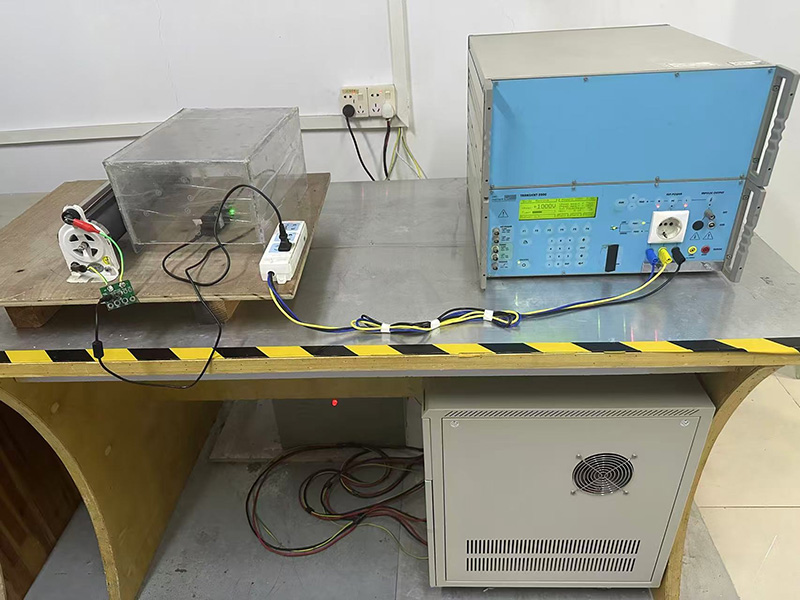Electrical Fast Transient Burst (EFT/Burst) test

Details
The Electrical Fast Transient/Burst Immunity Test (EFT/B) is an important item in electromagnetic compatibility (EMC) testing, which is used to evaluate the immunity ability of electronic devices when they are disturbed by fast transient transient bursts.
Testing principle
The EFT test simulates common transient pulse interferences in industrial environments, such as voltage spikes generated when inductive loads (like relays and motors) are switched on and off, as well as fast pulse swarms released when high-frequency switching power supplies and frequency converters are in operation. These interferences have the characteristics of high frequency (5kHz-100kHz), high voltage (up to several thousand volts), and group pulses (lasting for several milliseconds), which can easily couple into the equipment through power lines and signal lines, causing misoperation or damage to the equipment.
Test standard
The EFT test follows the international standard IEC 61000-4-4 and the Chinese national standard GB/T 17626.4. The test levels are classified into four categories based on the application scenarios of the equipment, and the voltage values respectively correspond to the test requirements of the power port and the signal port.
Testing equipment
-
Pulse burst generator: It is used to generate transient pulses that conform to standard waveforms (rise time 5ns, pulse width 50ns).
Coupling/Decoupling network (CDN) : Inject pulses into the power or signal port of the device under test while isolating reverse grid interference.
Capacitive coupling clamp: It is used for interference injection in unshielded cables and simulates the electromagnetic coupling effect between cables.
Test method
-
Port classification: Clearly identify the power port, signal port, and ground port of the device under test.
Coupling mode selection
Direct coupling: Pulses are injected into the power line through the CDN.
Capacitive coupling: Use a coupling clamp to apply interference to the signal/control line.
Pulse parameter setting: Adjust voltage, frequency and polarity (alternating positive and negative pulses) according to the standard grade.
Functional monitoring: Continuously monitor the working status of the equipment (such as display screens, communication links, control outputs) while applying interference.
Evaluation of test results
Test results are usually classified into the following levels:
Grade A: Normal function during testing, no performance degradation.
Grade B: Temporary loss of function, which can be automatically restored.
Grade C: Manual intervention is required for recovery.
Grade D: Equipment damage (unqualified).
Application scenarios
EFT testing is widely applied in the following fields:
Industrial automation: Ensuring the stable operation of equipment in complex electromagnetic environments.
In the field of new energy: such as photovoltaic inverters and energy storage systems, they can resist the impact of high-frequency switching noise.
Medical equipment: Ensure the absolute reliability of life support systems.
Through EFT testing, the anti-interference ability of the equipment to fast transient pulse groups in actual use can be effectively evaluated, thereby enhancing the reliability and safety of the equipment.

 Scan WeChat to chat
Scan WeChat to chat